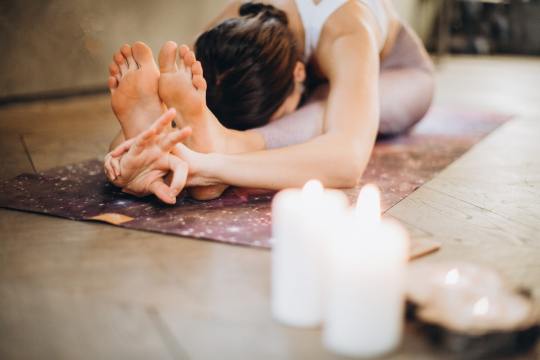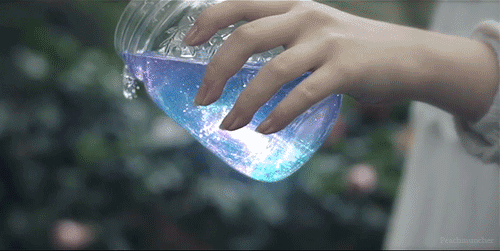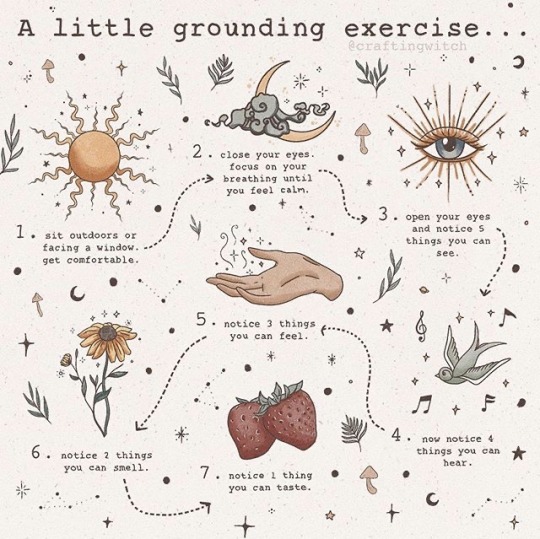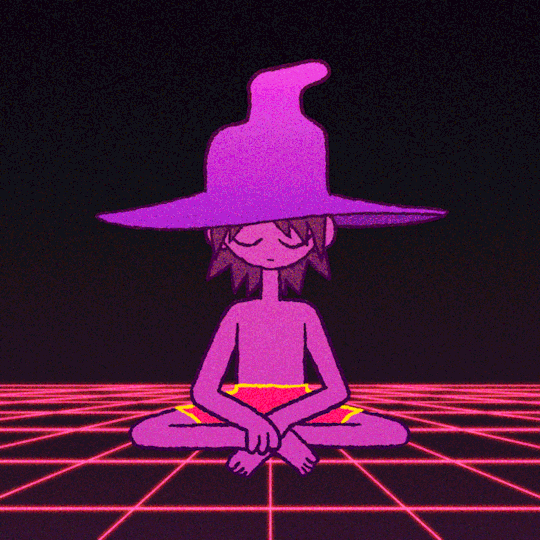Don't wanna be here? Send us removal request.
Text
Set Up For Successful Meditation

What is the current status of your meditation practice? Is it in the idea stage, waiting to be implemented at the right time? Maybe you know it's something that would be good for you, but haven't yet clicked into doing it as a daily routine?
Or maybe, you've done it at times, but either been frustrated by the results or lost interest? Or perhaps, you love to meditate and would like to gain some insights about how to go even deeper or make it even more effective?
In this article, we explore 4 Steps to Setup a Successful Meditation Session.
1. Set Up a Meditative Space
Whether it's a spare room, a closet, or a part of your bedroom, define a space that you dedicate to meditation. You can mark this space with a rug, a meditation bench, chair, or cushion.
By meditating in the same space consistently it comes to represent "meditation" to you, and thereby becomes a space that supports you moving into a meditative state. After a period of time, just sitting in this space will relax you.
Another way to enhance the atmosphere of your meditation space is to set up an "altar" that represents what is important to you in your practice and your life.
If the idea of having an altar inspires you, it can take any form that is pleasing and motivating to you. It can include photos, symbols, candles, flowers, offering bowls, statues, quotes, and so on. The basic idea is to put significant items there-ones that put you in the right mindset for meditating and remind you WHY you are taking time to practice.
If you use meditation to support a religious faith, place images or items that represent your faith on your altar. Personally, I have symbols of several different spiritual traditions in my space to represent the Universal Spirituality underlying all faiths and traditions. I also have family pictures and quotes that remind me of my higher intentions. The most important quality of your altar is that it represents what is important to you.
Once you've meditated in your sacred space for a while and used it to grow your inner skills, you'll be able to take your meditation on the road and do it virtually anytime, anywhere-no matter what is going on around you. This is when your meditation becomes truly powerful. Yet, even then, you'll probably really appreciate and value those times when you get to meditate in your sacred space.
2. Create a Ritual Around Your Practice
Set a regular time for meditation and create a consistent routine that moves you into your practice.
One way to support regular practice is to make meditation a part of an established routine that you already do. For most people, the best way is to integrate meditation into their morning routine. This encourages you to start your day from a relaxed, present, intentional perspective-and it insures that you meditate before other events in the day get in the way.
Once you've decided on the time you will meditate, plan your day accordingly. If you are meditating first thing, make sure you go to bed early enough that you can comfortably wake up early enough to practice without rushing. Set your alarm to wake you up with plenty of time.
Once you get up, have a routine to move you into your practice. For example, I first massage around my eyes and back of my head while still lying in bed. I then massage the bottoms of my feet with some tennis balls that are at the foot of my bed when I sit up. I use the toilet, then splash water on my face and massage my scalp. Then, I do some stretches to limber up before I stand in my standing meditation posture. All of this awakens and loosens me up and prepares me for a good practice session.
After standing meditation, I do a seated meditation, then I shake out my whole body, and finish with prayers for my family and the whole planet at my altar.
Having a routine that includes how I wake up, makes the movement into my practice seamless and reliable. Over the years, I have adapted and grown my routine as needs, insights, and new learning have guided me. Yet, the basic idea of having a ritual sequence has made waking up something that I look forward to and moving into my practice easy and natural.
3. Adjust Your Posture
If you search for photos of people meditating, nine times out of ten you'll find them seated in a cross-legged position. Unfortunately, this gives many people the impression that this is THE WAY to meditate. I heartily disagree.
In fact, unless you've grown up in a culture in which that is the way you normally sit, I encourage you to sit on a chair, bench, or bed that puts the soles of your feet flat on the floor and parallel with each other, with your hips level with or slightly above your knees.
Having the soles of your feet flat on the floor and parallel to each other puts you in a "grounded" position that also bio-mechanically aligns your feet, knees, and hips. This position is easy on your joints.
There are many acceptable hand positions for meditation-each with their own purpose. A basic starting position is to place your hands palms-down on your legs. This position is relaxing, while it also supports upright posture and alert attention. Finer points are "softening" your hands and lowering your shoulders to release tension and having a slight space under your armpits to encourage an open, expansive, spacious feeling in your body.
Next, imagine a string attached to the top of your head, drawing your spine into an upright position. Tuck your chin slightly to lengthen the back of your neck and put a subtle smile on your lips to encourage a calm, accepting, positive attitude.
Lightly close your eyes to support you in focusing inwardly. Unless you are using a technique that focuses on energy above your head, direct your gaze slightly downward. After practicing a while, you may notice that your eyes naturally open just slightly, with a soft focus to the outer environment.
Finally, sit forward on the front edge of your seat. Sit far enough forward so you feel some weight in your feet, which encourages a grounded, present feeling in your body. Sitting without back support also aligns and strengthens your spine, which has an empowering affect.
As you align and strengthen your spine, you are more likely to stay aligned with your higher intentions and feel strong in following them, rather than getting distracted and swayed by less important desires. You develop a strong "backbone."
Now, many people email me saying that this posture is just too hard and painful to maintain.
The reason for that is tension along the spine, weakness, and misalignment. Meditation practice is actually a powerful way to overcome these issues. First it reveals those issues, then it heals those issues.
During your meditation, you become aware of spinal tension, weakness, and misalignment. And, yes, that doesn't feel so good, initially. Yet, if you can accept it and observe it without judgment, without fighting it, over time, you'll notice that the tensions release, the spine adjusts, you come into alignment, and get stronger.
A well-known meditation teacher, Dr. Meares, says that some discomfort when starting to meditate is actually a good thing, because it teaches you to be able to observe discomfort without reacting, judging, or running away from it. As you calmly sit with discomfort, over time, it resolves and changes for the better. This is a powerful lesson to take with you into any uncomfortable situation in life. Be calmly present, relax and observe things non-judgmentally, then notice resolutions as they arise.
All that being said in favor of sitting upright without back support, you might approach this incrementally. Start by sitting forward for just a minute or two, calmly observe any discomfort until it is just too distracting, then sit back against support for the remainder of your practice. Gradually increase the amount of time that you sit in an unsupported upright position. After practicing for a period of time, this will actually become a comfortable, relaxed, and empowered way for you to sit.
One caveat is that some people cannot sit this way due to severe physical impairments. If that is the case, you can use back support or even lie down to meditate. If you do that, simply try to keep your spine as straight as possible by imagining that string extending your spine, tuck your chin slightly, adopt a subtle smile, soften your hands, and lightly close your eyes.
4. Adopt the Three Noble Principles-Good in the Beginning, Good in the Middle, Good at the End
In their book, "Meditation: An In-Depth Guide," Ian Gawler and Paul Bedson share these three principles for meditation practice.
"Good in the Beginning" means that when you start a meditation session call to mind your intention, your motivation for practicing. You might want to "relax, to be calm, to let go of stress, to be well, to heal. But what is suggested here is that the more we can expand our motivation, the more encompassing our motivation, the more meaningful our meditation becomes, the more we will value it, the more likely we are to do it, and the more benefit it will bring." (p.69, Meditation: An In-Depth Guide)
Consider how your meditation practice will have a positive impact on your day, on your interactions with others, and even on the collective consciousness of "all of us together." What if your practice is making a positive contribution not only to your life, but also to the lives of others, and to all life on Earth?
In the Buddhist tradition, the goal of meditation practice is enlightenment, so that we can use our enlightenment to bring enlightenment to all beings. In the Christian contemplative tradition, meditation leads us into deeper communion with God, so that we bring Divine Love and Light into the world. In a mind-body view of meditation, we come into a relaxed, expanded, focused state so that we heal our wounds, grow our inner skills, be more effective in anything we do, and more caring and compassionate with others.
What motivates you to meditate?
"Good in the Middle" has to do with your attitude during meditation. The attitude to practice is calm, present, non-judgmental awareness of whatever happens. Recognize whatever comes up, accept it, release it, and return to your focal cues.
"Good in the End" has to do with how you finish your practice. Rather than rushing off into your day, it's important to end intentionally and even to dedicate your practice to someone or something beyond yourself. From a meditative state you can more easily visualize positive outcomes for yourself, others, and the planet. You are also in a powerful state from which to pray. You can use your meditation to connect to a greater mission in life, such as being a vessel for Spirit to be more present in the world.
As you end your meditation think of how the skills you developed and the state of being you entered can have a greater impact in the larger whole.
When you Set Up a Meditative Space, Create a Ritual Around Your Practice, Sit with Good Posture, and Adopt the Three Noble Principles, your meditation practice will become much easier and more enjoyable, significant, and successful.
14 notes
·
View notes
Photo

Dear future humans,
Welcome to your new home, Earth
It’s a beautiful rocky planet in the star system Sol
Your existence here probably doesn’t make much sense to you and that’s okay
None of us know what’s going on but we try our best to make it work
You’re one of the most complex things this universe has manifested
You’re able to feel very intense emotions like love and sorrow
You’re able to breathe in the air that the plants produce for you
You can see beautiful pink sunsets transform one day into another
Yet no matter how amazing we are, we are also a broken species
We kill others so that we can have more, we destroy the environment that has nurtured us into life for fortune
We choose to forget our past, and have no care for tomorrow so that we can be happy in the moment
But not all is bad. Life is a beautifully short story that you are the main character of
You have gotten the rare chance to make an impact on this planet, positive or not
There is a finite amount of souls that will occupy this planet and you’re one of the lucky few
So don’t get dragged down by the negativity that surrounds our society, don’t allow machine men with machine minds control who you are
Allow yourself to learn as much as you can, choose the compassionate option to relieve some of the pain from others lives
Be a peaceful loving soul that has no room for discrimination or bigotry
Because whatever you send out to the universe, it’ll send right back
Don’t lose hope, know that I believe in you & no matter what there is a reason you’re here
3K notes
·
View notes
Text
🌊Meditation To Draw Close To Water Fairies🌊
Open your heart to the water fairies and the boundaries between you and them will dissolve. Once you feel close to them, it will be easier to experience them in their own habitat.

METHOD:
Relax completely. Imagine that you are sitting beside a beautiful lake or a calm stretch of ocean. This may be a familiar place that you love,or it could be a place of your own imagination. Take the time to settle in this spot. Fill in all the details of the environment. See the shimmering greens and the blues of the waters, and all the other colors, reflected and refracted. Look at the azure sky arching overhead. Notice any plants and rocks, any features of the landscape- let your eyes dwell on these. See how close you are to the shore,where you are sitting or standing and what you are wearing. Notice in particular that you are wearing a large,beautiful emerald pendant,and that the stone is flat against your chest,over your heart.
Listen to the sounds around you. Can you hear the breeze,the birdsong, the sound of the waves? Smell the freshness of the air and the scent of water carried on it. Feel the pure, moist air on your face and the gentle wind playing with your hair. Enjoy all of this and make sure you feel comfortable and relaxed.
Now concentrate on the center of your chest, where your heart is. Breathe in the beauty of this place and allow your heart to be filled with love for it . Let your heart feel warm,open,and invigorated.
Remember the wonderful emerald hanging against your chest,close to your heart. As you feel a closeness and empathy with the beauty of the waters, so the emerald begins to shine. The warmth in your heart is flowing into the emerald,which pulses and glows in response. The radiance within the emerald is gentle, yet amazingly powerful. Soon you are aware that its wonderful light is stretching out over the waters, bathing everything in the purest green. The emerald green is reaching into the waters, mingling with them and shining outward again. The waters are becoming clearer, and you begin to see into their depths. What wondrous gifts and treasures do you find lying there? What magical beings are present?
Invited by the emerald, called forth by the love in your heart, fairies are beginning to emerge from the waters. Watch as they come, strange and beautiful for the most part, others in shapes you may not have imagined. Continue to let the emerald light shine from you and to send a welcome from your heart.
Let the fairies emerge in their own way. They may remain far out on the waters, or they may approach closer to the edge. They may even come onto the land. Watch them as they appear, remaining serene and letting the emerald light of your heart continue to shine. Listen also, for the fairies may be talking,laughing,whispering, or most likely of all- singing.
Invite the fairies close, asking if one of them will speak with you. Listen to what the fairy says. If you like, you can ask questions- for instance, you may want to find out what you can do to enable you to draw closer to the water sprites in everyday life. The answers you get may be startlingly clear or they may not make sense at first. Try not to puzzle over them for now.
When the time seems right, tell the fairies that you are bidding them farewell and that you honor them,and thank them for their presence. Say that you will visit them again. Let the emerald light slowly fade and shrink back into the crystal on your chest. Affirm that the emerald is closed,and that your heart is, for now, also closed. Touch the emerald and feel its coolness and solidity. Draw away from the scene.
Now come back to everyday awareness,patting your body all over to make sure that you are in the here-and-now. Make a note of all you experienced and any thoughts that have arisen in a special notebook.
You can repeat this journey as many times as you wish. More questions may occur to you, and you can ask your water-fairy spokesperson to answer them. Do not be surprised if the responses you get give rise to more and more questions, for that is the fairy way and is part of your quest. Happy Journeying!

2K notes
·
View notes
Text
I personally have experienced the effect meditation can have on your blood pressure. Many a time I have gone without meditating for a number of days and my blood pressure has slowly crept up. I have done many experiments with my blood pressure and meditation and this is one I encourage you to try. I simply bought an electronic blood pressure machine which you can buy from a pharmacist or chemist for about $200 Australian.
I first checked my blood pressure to find out what it currently is. I then dd 20 minutes of meditation and checked it again. I found that both my blood pressure and my heart rate had dropped by up to 30%. I have also tried doing the same exercise but instead of meditating, I just sit for 20 minutes and relaxing but I have found I do not get anywhere near the same improvement. Generally I would only see about 5 to 10% improvements.

3K notes
·
View notes
Text
One of the core reasons why an individual might learn meditation is to help with their ability to cope with stress and to become calm. One of the roles of meditation is to help release the alpha waves in both our left and right side of our brains. These alpha waves will help bring about a sense of calm, similar to when you would whistle a happy tune or simply day dream.
Learning to meditate and bring you to a state of calm will help you cope with the daily stress of life. From personal experience I have found that if I do not meditate for 20 minutes a day minimum, I find that my ability to cope with the daily stress of work is far harder then when I have completed my meditation.

How do you stay grounded? ✨🥰
10K notes
·
View notes
Text
Meditation will help you to find that point at which you can cope and manage all the bombardments without feeling over whelmed but that is not the only reason we meditate. Let me outline four reasons why you should consider learning the art of meditation.

“Closer to the Core” by Sydwox x Sean Zenner
3K notes
·
View notes
Photo
The whole role of meditation is to help find your inner peace that is the art of putting all that chaos in your mind and you life into some sort of order. The first step of meditation is bringing you to a point of calm, a point of peace upon which you can build and manage control. Once you have achieved that you can further explore your own mind. Our mind today often swirls with information, facts, stress, worries and much more simply because of the way in which we live and the bombardment of information from commercial entities. The role of meditation is to help you find a way of managing that information and to reflect on your surroundings.

The Midnight Gospel
1K notes
·
View notes